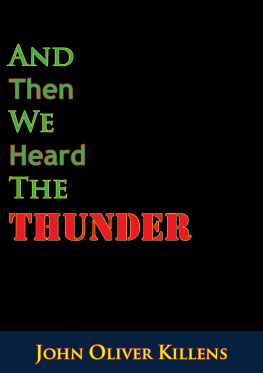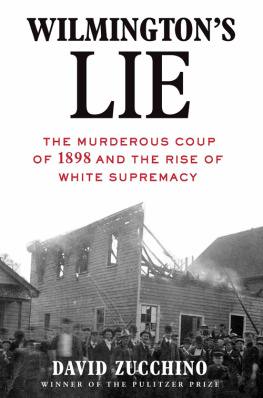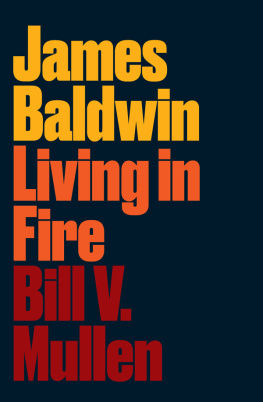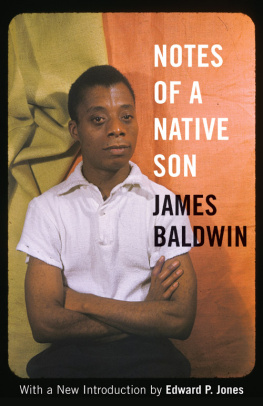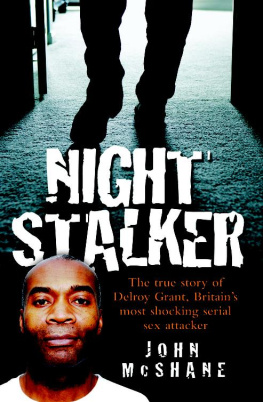

This edition is published by PICKLE PARTNERS PUBLISHINGwww.picklepartnerspublishing.com
To join our mailing list for new titles or for issues with our books picklepublishing@gmail.com
Or on Facebook
Text originally published in 1963 under the same title.
Pickle Partners Publishing 2015, all rights reserved. No part of this publication may be reproduced, stored in a retrieval system or transmitted by any means, electrical, mechanical or otherwise without the written permission of the copyright holder.
Publishers Note
Although in most cases we have retained the Authors original spelling and grammar to authentically reproduce the work of the Author and the original intent of such material, some additional notes and clarifications have been added for the modern readers benefit.
We have also made every effort to include all maps and illustrations of the original edition the limitations of formatting do not allow of including larger maps, we will upload as many of these maps as possible.
AND THEN WE HEARD THE THUNDER
BY
JOHN OLIVER KILLENS
AND THEN WE SAW THE LIGHTNING, and that was the guns. And then we heard the thunder and that was the big guns. And then we heard the rain falling and that was the drops of blood falling. And when we came to get in the crops, it was dead men that we reaped.HARRIET TUBMAN, ex-slave, abolitionist, Union Scout, and Freedom Fighter (describing a battle of the Civil War which she witnessed)
TABLE OF CONTENTS
Contents
DEDICATION
TO MY MOTHER
AND TO
HARRIET TUBMAN, who stands head
and shoulders above most Americans
in my private Hall of Fame ,
and to
MY BUDDIES, fallen and standing ,
and to
CHUCK AND BARBARA and to all
young people everywhere.
May they never hear the man-made thunder ,
nor see the terrible lightning
INTRODUCTION
How do you live in a white mans world? Do you live on your kneesdo you live with your shoulders bent and your hat in your hand? Or do you live like a man is supposed to livewith your head straight up? Joe Youngblood poses these questions in John Oliver Killenss first novel Youngblood (1954). In a review of that novel ( The New York Herald Tribune , July 11, 1954), novelist Ann Petry quoted those lines and drew a perceptive conclusion: This thematic question pervades the thinking, controls the action, dominates the conversation of all the characterswhether they be black or white.
The theme of the black mans struggle for dignity within a racist society is one that has, at the very least, influenced the work of black novelists from the time of William Welles Brownauthor of the first novel published by an Afro-American, Clotel, or The Presidents Daughter , which was printed initially in London in 1853. Few novelists, however, have pursued the issue throughout their careers with as much determination and passion as John Killens. Therefore, Miss Petrys comments about Youngblood have proven not only accurate but prophetic.
Youngblood is a graphic, almost documentary tale of a black family struggling to survive in a racist, backwoods Georgia town. The story records the experiences of two generations of the Youngblood family. The author vividly portrays the grim reality of Jim Crow in the South. The brutal victimization of the Youngbloods and other blacks is counterpointed by the more optimistic portrayal of blacks emerging awareness that resistance and confrontation are necessary despite the mortal risks involved. Still, Killens tended, as do many first novelists, to rely too heavily on the Manichaean principle of tension between good and evil for dramatic effect. From a structural standpoint, Killens diminished the oversimplified portraits of villainous whites and virtuous blacks by including the more subtly drawn character of Oscar Jefferson, a poor white farmer who gradually aligns himself with the Youngbloods. It is through Jeffersons agonizing psychic transformation that the novel achieves its greatest sense of moral depth and complexity.
Eight years after his first novel, John Killens published And Then We Heard the Thunder (1962). During the interim, he occupied himself with various pursuits, including writing for television and the movies. (Among his credits was the script for the highly praised 1959 film, Odds Against Tomorrow. ) This hiatus from the rigors of fiction writing seemed to have worked to Killenss advantage. His second novel reflected a ripening of his talent and an expanded concept of the novel form. Although only slightly less insistently focused on the tragedy and irony of Americas racial predicament, his second book displayed a breadth of thematic complexity and of setting that made Youngblood appear provincial.
Soon after the publication of Youngblood , Killenss work attracted criticism as race fiction that advocated a separatist ideology. When his second novel appeared, those judgments grew more insistent. But a close reading of Youngblood makes such reactions seem misdirected, even paranoiac. The novel has its faults, but these are weaknesses arising from the basic nature of its form. If published today, it would likely be categorized as a family sagaa naturalistic tale of one familys struggle to escape societal oppression. It is no more a race novel than Henry Roths Call It Sleep (1934) or any of the numerous fictional sagas that document the horrors of the Holocaust. Like most of these novels, it suffers from excessive detail, repetition, stereotypical characters, and occasional sentimentalityweaknesses that generally result from an authors glove-tight identification with the predicament of the group portrayed. Still, novels like Youngblood provide a passionately felt and literally detailed picture of a specific place and time. And in his first novel Killens created an indelible montage of the cruelty and injustice of black life in the Jim Crow South.
Because And Then We Heard the Thunder is also a long, sprawling, copiously peopled novel, it is not surprising that it has some of the same weaknesses as its predecessor. Set during World War II and focused on life in a black military company in basic training and on the battlefields of the South Pacific, it is full of gritty but extravagant detail and dialogue from barracks and foxholes. Thinly drawn characters abound and the repetitive manner Killens uses to drive home his anti-segregationist, anti-war theme is often distracting.
Nonetheless, the book exhibits a marked extension of Killenss conception of the novel form. It shows the beginning of a stylistic stretching-out that would continue throughout his writing career. The storys setting also shows a fundamental conceptual enlargement. Instead of the rural southern background that had become commonplace for black fiction in the 1950s and 1960s, Killens chose a much larger canvas. The story begins in New York City, moves to a basic training camp in Georgia, and then on to the South Pacific campaign. It ends in Australia at the close of the war. This variegated background provides opportunity for wider narrative sweep and for comparisons of regional attitudes that bear on the novels basic themes. Killens makes excellent use of this opportunity in his depiction of both the Filipinos and Australians reactions to black soldiers before and after they were exposed to the racist propaganda of white American soldiers.
Although the novels hero, Solly Saunders, must contend with the same problem that plagued the Youngbloods (Do you live like a man is supposed to livewith your head straight up?), Killens has greatly extended the arena in which the protagonist grapples with his dilemma. In one sense, the Youngbloods predicament was starkly simple: The issue was survival, attempting to salvage some scrap of dignity from an overtly brutal and hostile environment in which their adversaries were dead set on either destroying them or keeping them in their place. Solly Saunderss conundrum springs from the same racist societal distortions but is of an entirely different order.
Next page
